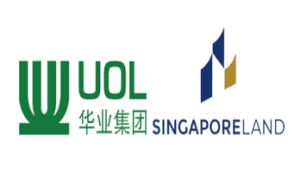Changes to LBC show diff trends of suburban vs prime condo
The latest Land betterment charge rates, announced Thursday (Feb. 29, 2018), reflect the polarised performance of the private condominiums market in terms of suburban areas and prime locations.
Property analysis shows that the sharpest cut of 19.2 per cent for LBC rates for non-landed residential use was in the Tanglin/Cuscaden area, followed by chops of 18.8 per cent in the Ardmore/Draycott/Claymore area, Orchard, One Tree Hill, Paterson/Lengkok Angsa and Nassim/Orange Grove/Ladyhill/Fernhill areas.
Braddell/Toapayoh and West Coast/Clementi were both affected by a 14.7% increase.
Property researchers for Singapore, South-east Asia and Australia said that the performance polarised reflected the contrast between suburban sites and non-suburban ones seen in state land tenders during the past six-months.
The bids that were lower than expected for Orchard Boulevard and its surroundings lowered the rates, whereas the bids that were higher than anticipated for Toa payoh and Clementi increased the rates.
Market observers note that this divergence has been caused by the doubling of the additional buyer’s stamp duty rate (ABSD) to 60 percent on foreign home buyers in Singapore last April. Traditionally, the prime residential market in Singapore has been dominated by foreign buyers.
Developers can pay an LBC as a fee to be able to use certain sites more efficiently or to build larger projects. The rates for the year are announced on the first of Mar and 1st September, following a review carried out by the Singapore Land Authority.
In the latest revision of LBC rates, average LBC for non-landed residence use increased just 0.1 percent.
LBC is based on CV’s assessment of the land values, and takes into consideration recent sales. They are classified by 118 different geographic areas of Singapore.
Pinetree Hill Pricing at Pine Grove is priced to sell out.
Rates of LBC for residential non-landed properties increased in 37 sectors. The increase ranges from 3 percent to 14 cents. Rates have decreased in 27 sectors. The declines range from 1 to 19 percent. SLA announced that the rates of the remaining 54 sectors would remain unchanged.
Analyst does anticipate that the downward revisions made to LBC in selected geographical areas will not boost the market for residential collective sales because of more difficult obstacles. Analyst cited also the buyer-seller gap, developers low risk appetite and property cooling.
LBC commercial rates have been increased by an overall average of 3.8%. This could be attributed to the renewed interest of investors in assets that include a commercial component.
104 out 118 of the geographical sectors saw an increase in the LBC rates for Commercial Use between 3 to 9 per cent.
Some property observers attributed increases in the number of sales to large-ticket transactions for office and retail properties, like Far East Shopping Centre and Shenton House. They predict that sentiment may be dampened for commercial group sales in the near future.
LBC rates have increased in average 7.8% for land residential use. Rates in 116 industries increased between 7-8%.
Property consultants believe that boutique developers who have developed newly built homes are more expensive than those who rebuild older properties.
LBC rates rose by 0.7 % on average for the group of hotels and medical facilities. Rates increased by 5 to 7% in 18 geographical areas, but remained the same in 100 others. The highest rates were seen in Robinson Road as well as Orchard, Orange Grove, Bugis and Orange Grove. Observers point out that Singaporeans and tourists have brought in a lot of business to hotels.
Rates for the industrial use group increased in average by 1.7 percent. Rates for LBC in this group rose in 42 industries by between 3 to 5 per cent. In the remaining 75 sectors, there was no change.
Experts say that the Chief valuer would have likely taken into account the performance and trends of the entire industrial property sector, including the rents, prices, and land transactions in the six months between September 1, 2023, to February 29, 2024.
LBC rate for religious places or civic and social institutions remains unchanged. Also left untouched were the rates for other use groups covering open spaces/nature reserves, agriculture and drains/roads/railways.
Land Betterment Charge Act (LBAC) – which went into effect Aug 1, 2022 – consolidates the charges that are levied for the improvement of land values.
The LBC replaces the development charge, temporary development levies and differential premiums. The DC Table of Ratios was replaced with the LBC Table of Ratios. It is still revised half-yearly.
